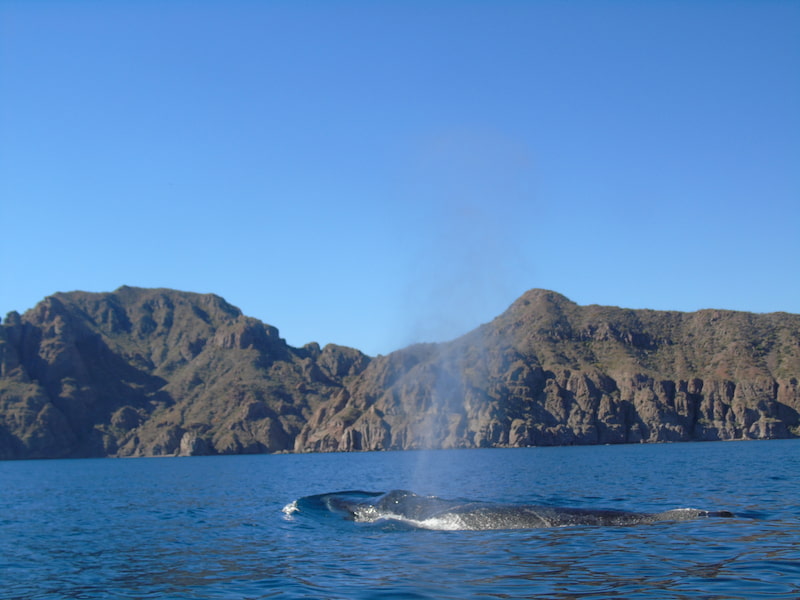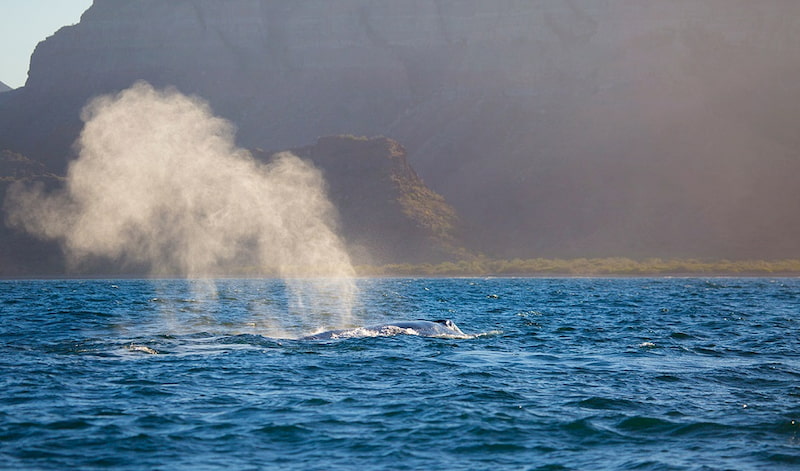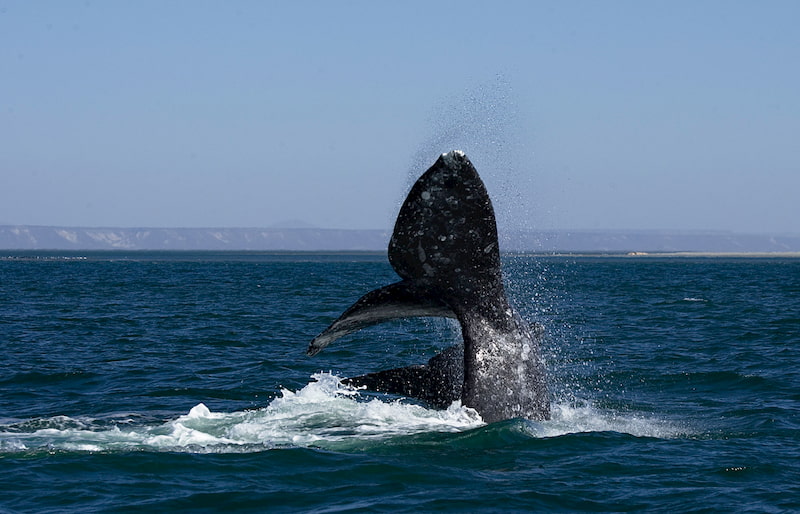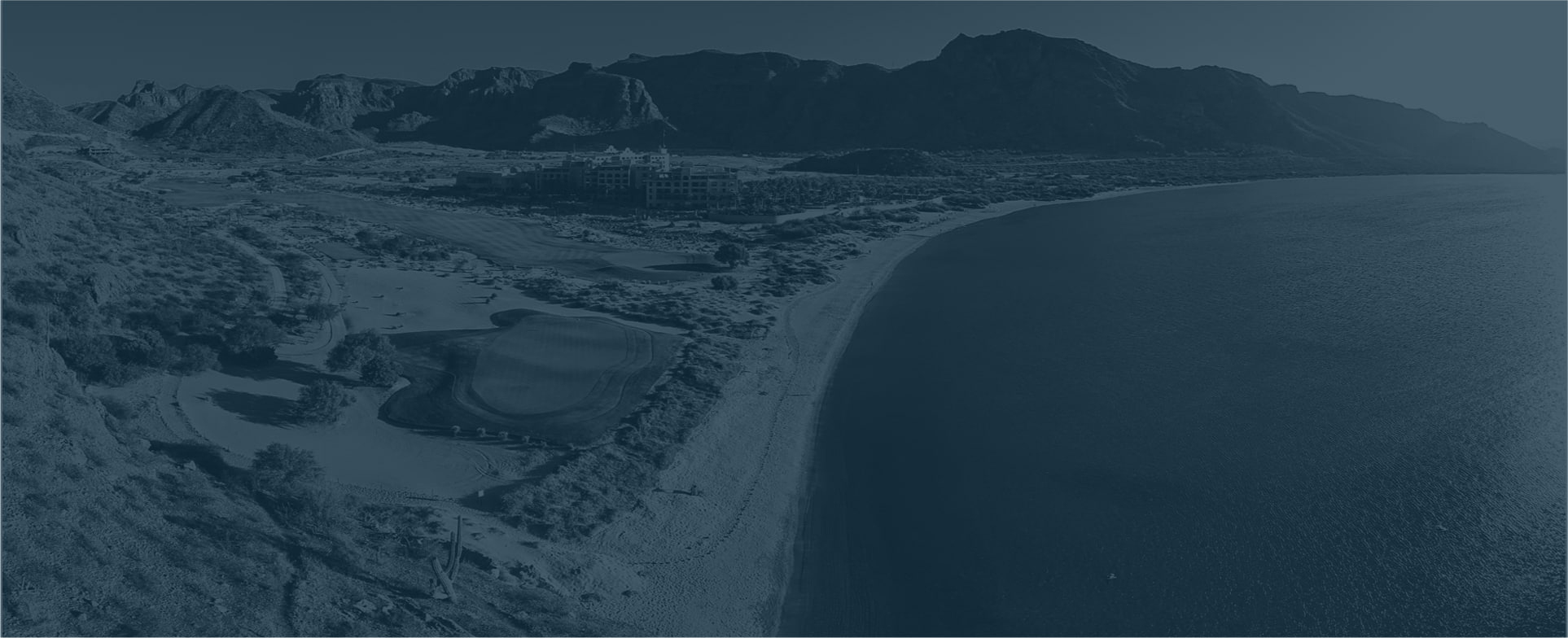Check Availability
CHILDREN (AGES 0 - 12)
0
You need to select a city first
Humans aren’t the only ones drawn to the warm temperatures of the Sea of Cortez during the winter. As northern waters grow chilly, whales migrate down to Mexico’s sunny coast to grow their families, and if you get the opportunity to travel during whale season in Loreto Mexico, you can spot these gentle giants breaching the surface of the water and waving their tails in the air before diving back down to the depths of the sea. Experiencing the majesty of these creatures is a once-in-a-lifetime experience, and when you go whale watching in Loreto Mexico, you can check this off your bucket list.
For centuries, whales have made annual trips to the warm waters of Mexico, and today, you can spot humpback, orca, grey, and blue whales in Loreto, Baja California Sur, Mexico. From the icy winter waters around Alaska, these whales make a 6,000 mile journey to the warm and calm waters of the Loreto Bay National Park, the ideal spot for birthing their calves. The babies then spend the first couple months of their lives learning how to swim and feed in these tranquil waters. Before the waters start warming up for summer, the whales will return home, marking the end of whale season in Loreto Mexico.

When you spot blue whales in Loreto Baja Mexico, you’ll be looking at the biggest animals to have ever existed. While blue whales will live as long as a human, most other animals are miniscule in comparison. These whales measure between 82 and 105 feet and weigh in at up to 200 tons. Their tongues alone can weigh the same as an adult elephant. However, they only feed on krill: tiny, translucent shrimp-like sea animals. Opening their jaws as they swim through the water, they’ll eat four tons of krill each day. When their calves are born, they’re also some of the world’s biggest creatures, weighing up to three tons and measuring around 25 feet. Like many of the sea’s creatures, the blue whales were once hunted, but today, laws require their protection, preserving them for years to come.

Whale Season in Loreto, Mexico
During the first three months of the year, hop on a boat and sail out on the sea to spot blue whales in Loreto Mexico. When you go whale watching in Loreto Mexico, you’ll be guided by local experts and marine biologists who are familiar with all the different species and conservation efforts. Because blue whales are incredibly shy, too many boats during whale season in Loreto Mexico can scare them away and limit the time they spend feeding at the surface. To give them space, boats in the Loreto Bay National Park must stay at least 100 meters away from blue whales. Because most whale watching trips leave in the morning and sail across the smooth waters, be sure to bring a light jacket to protect against the morning breeze. Don’t forget to grab your camera as well so that you can capture the magic of the whales breaching the ocean’s surface.
Viajes Danzante offers a Sea of Cortez Whale Watching Tour that helps visitors discover humpback, Sei, Fin, Orcas, and especially the Blue whale on their trip to Loreto.

During the winter, the coast of Mexico is one of the few places in the world where you can go whale watching. As you sail across the smooth waters, you’ll get to see more of the Islands of Loreto and Danzante Bay, but what makes these trips magical is the appearance of whales at the water’s surface. As you learn more about these gentle giants, you’ll be filled with wonder and excitement when they wave their tails in the air.



Subscribe to our newsletter and receive special offers and exclusive Resort news by Email, SMS, or WhatsApp.
Resort Phone: +52 (613) 134 1000
USA/CAN Toll Free Number: 1 800 790 4187
Km. 84, Carretera Transpeninsular, Ensenada Blanca Loreto, 23880 Loreto, Baja California Sur, Mexico
Pegasus: 75285
Copyright © 2021 — All rights reserved